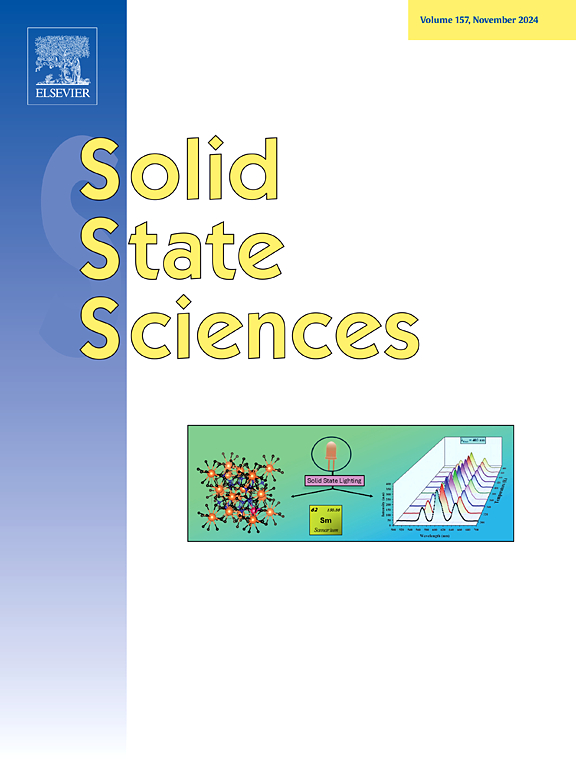Ultra-thin g-C3N4-Modified Co3V2O8 hollow spheres for enhanced photocatalytic degradation of MB
IF 3.4
3区 化学
Q2 CHEMISTRY, INORGANIC & NUCLEAR
引用次数: 0
Abstract
Considering the important role of morphology and interface during the photocatalytic process, the g-C3N4@Co3V2O8 Z-scheme heterojunction photocatalyst was successfully prepared by a facile hydrothermal method and subsequent wet-impregnation treatment. The sample synthetic method allowed ultra-thin g-C3N4 nanosheets to uniformly adhere on the surface of Co3V2O8 hollow spheres, which not only avoided the aggregation of g-C3N4 nanosheets but also benefited from forming a multidirectional contact interface to short the transfer distance of photoelectrons between g-C3N4 and Co3V2O8. Benefitting from the unique hollow structure and Z-scheme configuration, g-C3N4@Co3V2O8 composite with 10 % g-C3N4 showed a better photocatalytic degraded performance, achieving 93.7 % degradation efficiency of methylene blue (MB) in water within 60 min, which was 3.1 and 1.9 times higher than these of pristine Co3V2O8 and g-C3N4, respectively. The active species analysis demonstrated that ·O2− and ·OH played a pivotal role in the photocatalytic degradation of MB. Based on the experimental results a comprehensive photocatalytic degradation mechanism was proposed. Our work provided an opportunity to design Z-scheme heterojunction photocatalysts for pollutant degradation in wastewater.

超薄g- c3n4修饰的Co3V2O8空心球增强光催化降解MB
考虑到形貌和界面在光催化过程中的重要作用,通过简单的水热法和后续的湿浸渍处理成功制备了g-C3N4@Co3V2O8 z型异质结光催化剂。样品合成方法使超薄g-C3N4纳米片均匀粘附在Co3V2O8空心球表面,既避免了g-C3N4纳米片的聚集,又有利于形成多向接触界面,缩短了g-C3N4与Co3V2O8之间的光电子转移距离。10% g-C3N4的g-C3N4@Co3V2O8复合材料由于其独特的中空结构和Z-scheme构型,在60 min内对水中亚甲基蓝(MB)的降解效率达到93.7%,分别是原始Co3V2O8和g-C3N4的3.1和1.9倍。活性物质分析表明,·O2−和·OH在光催化降解MB中起着关键作用。基于实验结果,提出了一种全面的光催化降解机制。我们的工作为设计用于废水中污染物降解的z型异质结光催化剂提供了机会。
本文章由计算机程序翻译,如有差异,请以英文原文为准。
求助全文
约1分钟内获得全文
求助全文
来源期刊

Solid State Sciences
化学-无机化学与核化学
CiteScore
6.60
自引率
2.90%
发文量
214
审稿时长
27 days
期刊介绍:
Solid State Sciences is the journal for researchers from the broad solid state chemistry and physics community. It publishes key articles on all aspects of solid state synthesis, structure-property relationships, theory and functionalities, in relation with experiments.
Key topics for stand-alone papers and special issues:
-Novel ways of synthesis, inorganic functional materials, including porous and glassy materials, hybrid organic-inorganic compounds and nanomaterials
-Physical properties, emphasizing but not limited to the electrical, magnetical and optical features
-Materials related to information technology and energy and environmental sciences.
The journal publishes feature articles from experts in the field upon invitation.
Solid State Sciences - your gateway to energy-related materials.
 求助内容:
求助内容: 应助结果提醒方式:
应助结果提醒方式:


